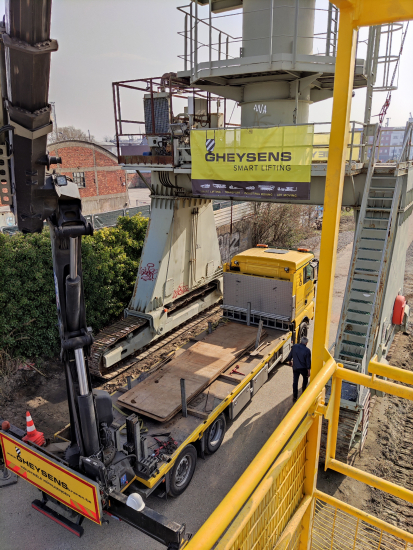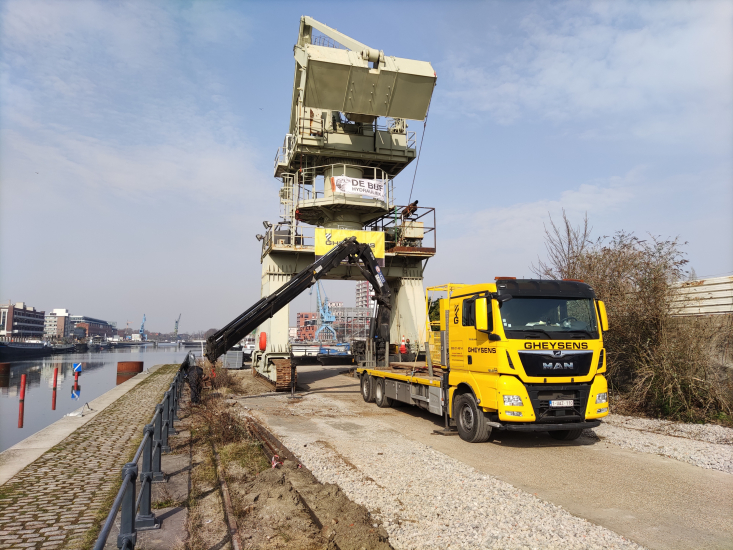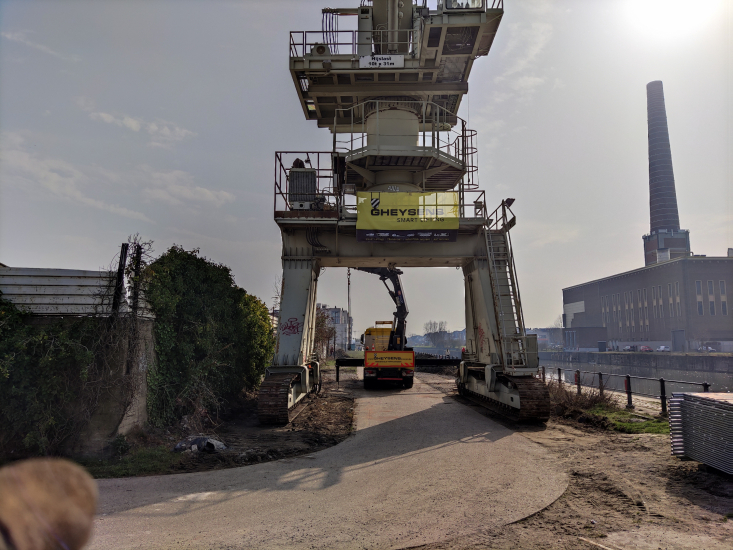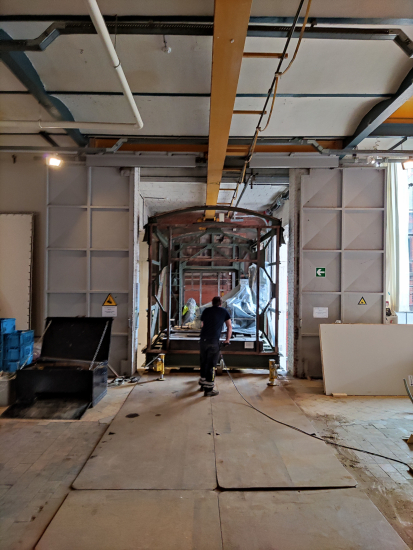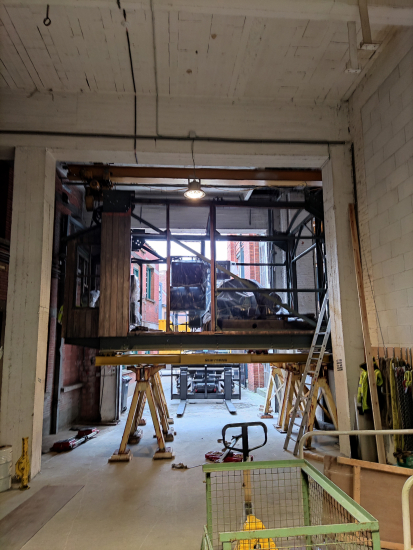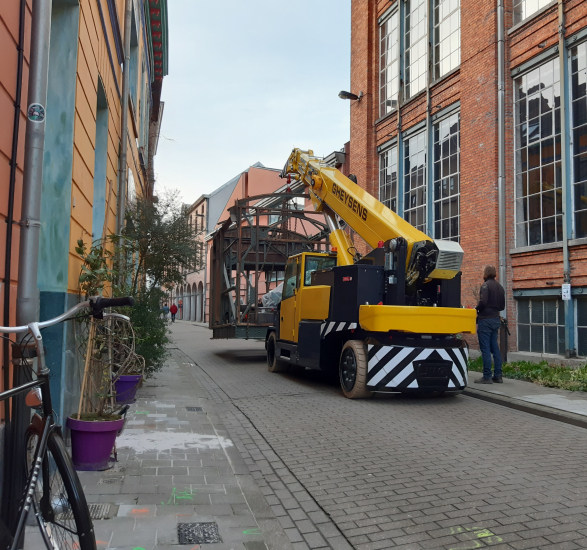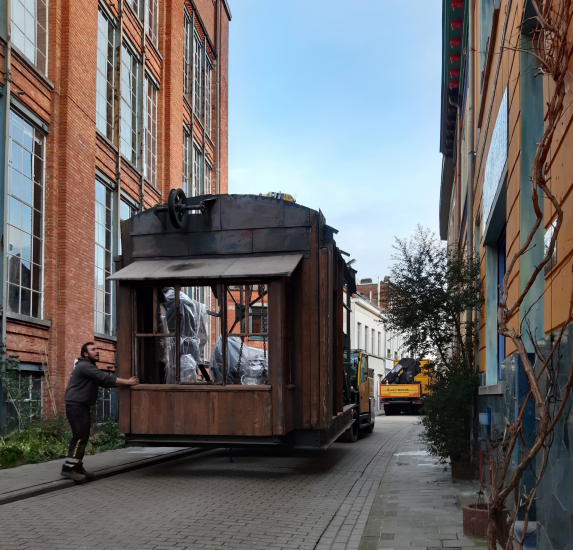The Sobemai crane & the MIAT crane
The City of Ghent wants to let the rich port history of the Oude Dokken live on in this new district between the Dampoort and the Muide. The four cranes that are already there are supplemented by three other historic cranes. Together they form a beautiful heritage landscape that refers directly to the maritime past of this area.
The Sobemai crane
The “Sobemai crane” has been purchased from Euroports. This crane dates from 1988 and weighs 150 tons. This crane is located at the northern end of the Kleindokkaai, and will also function as a viewing point. The crane had already arrived at its location in 2018 but had yet to reach its final base.
Gheysens came up with the most economical method of moving it. It was no longer possible to propel the crane under its own means, but together with company De Buf from Oostkamp, the old undercarriage motors were connected to external pumps. Thus, the crane was put in place in half a day.
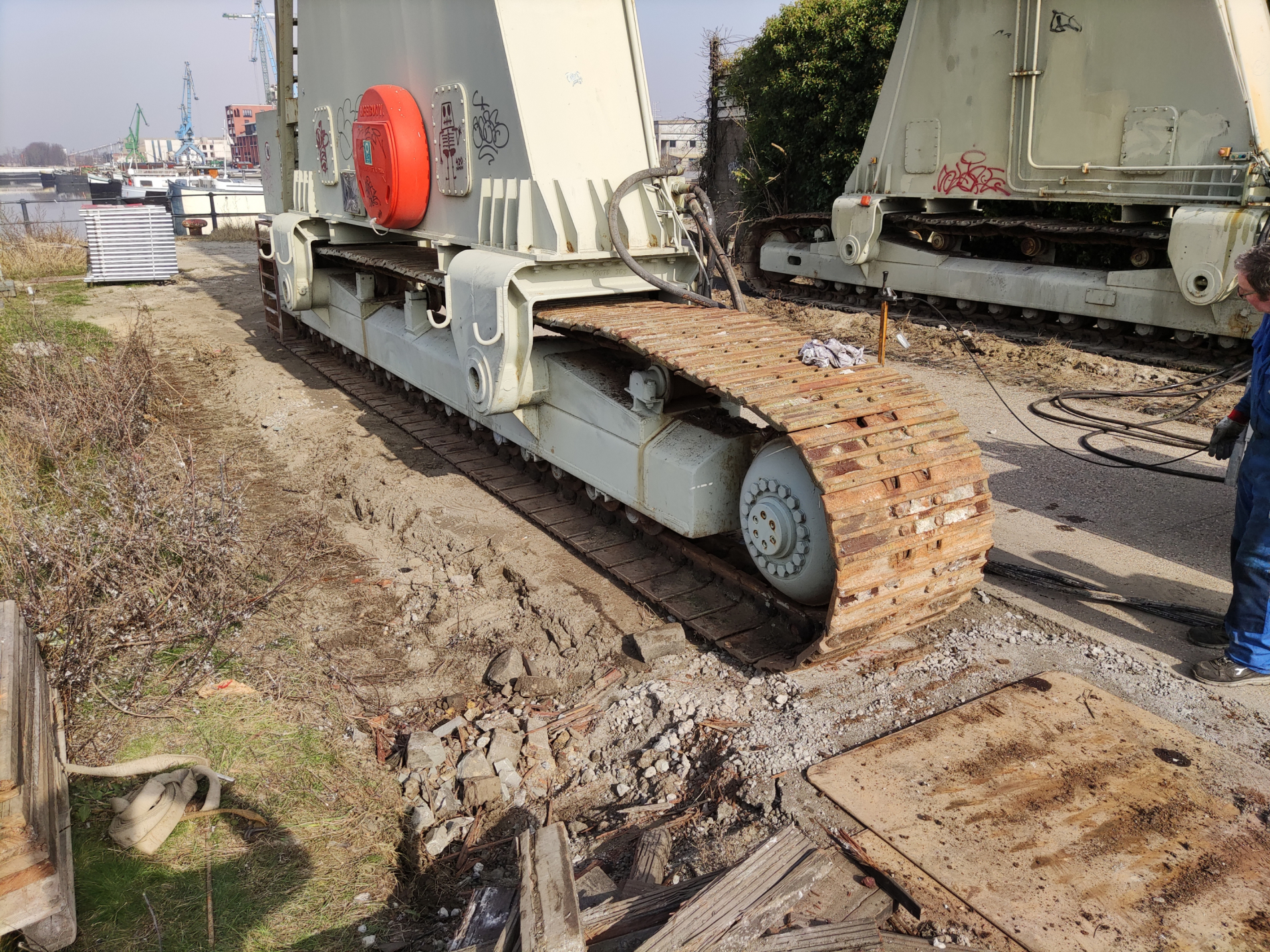
The Sobemai crane
The MIAT crane
“Le Titan Anversois” is the little brother, and also the oldest crane (1925) of the crane ensemble. This crane was still stored in the MIAT and was moved again by Gheysens on 20/1/2021 in a place of honor at the water of the Oude Dokken, near the Handelsdokkaai.
By placing the crane outside in its original environment, it can function as a landmark and as an “ambassador” for the MIAT.
Some facts
- The cranes are made in Belgium and illustrate the spectacular evolution that has taken place in vertical transport in less than 65 years.
- The Sobemai crane is a hydraulic balancing crane, made according to a Belgian patent. This crane worked quickly and precisely. Due to the low energy consumption and the fast handling of goods, the balancing crane had a high efficiency.
-
The MIAT crane is a crane from crane builder Le Titan Anversois. This unique crane was donated to the MIAT (Museum of Industry, Labor and Textile) in the early 1990s by the company 'La Floridienne'. The crane has a distinct historical value, and is the only remaining crane from the interwar period (1925) for the Ghent region.
